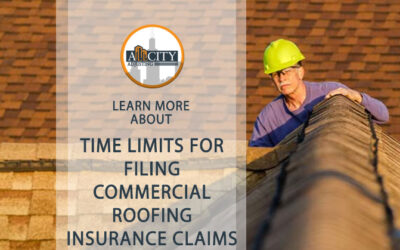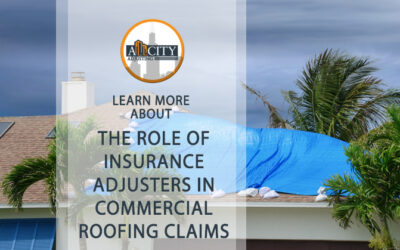Written By: Andy Gurczak
June 11, 2021
Holiday Fire Safety Tips
Holiday Fire Safety Tips Fun Facts
Keep holidays happy and bright by making fire safety a priority during the festive season. Seasonal decor can often be a fire hazard if not handled properly or if it’s placed next to a potentially dangerous item. In fact, holiday candles, dangling garlands, fireplaces, and even Christmas trees can become fire hazards. For this reason, following holiday fire safety tips from industry experts is a great way to keep festivities safe for you and your family.
Facts About Holiday Home Fire Safety
- One of every three Christmas tree fires is because of electrical problems.
- Another cause for Christmas tree fires is heat sources too close to the tree. In fact, statistics show that one in every four cases is because of this reason.
- Furthermore, December is the peak time of year for candle fires.
- One-third of all candle fires start in the bedroom.
What Are Some Holiday Fire Safety Tips?
Between 2012 and 2014, there was an average of 10 deaths and $15.7 million in property loss. These were related to Christmas tree fires. During that same time period, an average of 10 deaths and $42.2 million in property loss occurred as a result of fires related to candles. There are more than a few reasons why holiday fires happen. The following are holiday fire safety tips that may help you prevent and handle fire during festive times.
Christmas lights holiday fire safety tips
- First, DON’T overload circuits! Many people overload electrical circuits trying to accommodate lighting, decorations and cooking appliances. Unbeknownst to them, this increases the potential for electrical fires and outages. 25 percent of Christmas tree fires are caused by electrical problems. A typical household circuit can power 70 strings of 50-bulb mini lights, or 300 to 600 strings of 50-bulb LED lights.
- Secondly, always inspect lights before plugging them in. Throw away any frayed, kinked or worn light strands.
- Third, use a ground-fault circuit interrupter (GFCI). It is a special type of wall outlet installed in areas where water and electricity could mix. GFCIs monitor the electrical current flowing through them and automatically shut off if the current becomes unbalanced. Likewise, if water enters the system. GFCI have a “test” and “reset” button on the front.
- Fourthly, know that not any lights will do. Use low energy, safe lighting that’s been certified by a safety testing lab.
- Fifth, remember to shut the lights. Never leave the lights on overnight. Same goes for any appliances that are not in use
Christmas tree holiday fire safety tips
- Choose fresh trees over dry, despite them being a little more expensive. The fresher the tree, the less likely it is to catch fire. For this reason, look for flexible needles that don’t break, and a trunk with sap.
- Remember, keep the water coming. The tree stand should be constantly watered. Moreover, it should be sturdy enough to resist toppling by kids or pets.
- Furthermore, place cords along walls to prevent a tripping hazard. Never run them under rugs or carpets.
- It is also extremely important to keep the tree away from heat sources. These could include fireplaces, heaters, candles and even a TV.
- Dispose of a dry tree, as soon as possible. Don’t even keep it in the garage.
Artificial tree safety awareness
- Artificial trees should be flame resistant. In addition, if the tree contains a built-in lighting set, they should have a seal for an approved safety testing laboratory.
- If the artificial tree is metal, never use electric lights. These can charge the tree and lead to electrocution.
Keep a fire extinguisher nearby. Make sure everyone knows its location and how to use it.
Space heaters, safety detectors and electric cords for holiday fire safety tips
- Use space heaters with care. Space heaters should only be used as temporary heating. Furthermore, they should be plugged into a 20-amp circuit if possible. Never plug a space heater to an extension cord. Moreover, keep Christmas trees away from them.
- Place smoke detectors in each bedroom, in the halls adjacent to the bedrooms and on each level of the home, including the basement.
- If you have a home that has natural gas or liquid propane gas, place carbon monoxide detectors. Locate these in hallways adjacent to bedrooms and on each floor of the home. Consider checking out combined smoke and CO detectors. In addition, detectors should be hardwired, 120-volt, with battery backup, and interconnected. If they are interconnected, one goes off and they all go off. If there are people in the house who are hearing impaired, consider installing visual strobe detectors for their safety.
Candle holiday fire safety tips
- Candles may provide a festive ambiance, but they also pose a fire threat. The top three days for home candle fires are Christmas, New Year’s Day, and Christmas Eve. Regardless, candles are a hazard all year round.
- First, you could consider replacing traditional candles with flameless, battery-operated types. However, don’t forget to turn them off, LED lights do get hot.
- If you do have flame candles, never leave them unattended.
- Moreover, be cautious when decorating with candle. Use sturdy candle holders to keep candles from tipping over or touching flammable surfaces. In fact, keep candles at least 12 inches away from all flammable items.
Chimney and fireplace holiday fire safety tips
- Firstly, don’t forget to clean chimneys!
- Since this chore involves more than sweeping soot, it’s best to hire a Certified Chimney Sweep.
- Fireplaces and chimneys should be inspected by a professional chimney sweep at least once a year. Additionally, halfway through the season, inspect new wood-burning installations, such as fireplaces or wood-burning stoves.
- As a proactive measure, clean the ashes from the fireplace after each fire. Equally important, burn only CSIA-accepted manufactured logs or firewood that’s been seasoned a year or more. Don’t just burn any old thing.
- Make sure the damper is fully open before lighting a fire.
- Burn fires that consume fuel. Wet or poor-quality fuel results in slow fires and more creosote build-up on the flue.
- Never burn pressure-treated or painted wood.
- Use a “top-down burn” method. This burns hotter and cleaner fires. As a result, it produces less smoke than traditional fire-building methods. Place the largest logs on the bottom, add a cross-layer of smaller logs, then some crushed newspaper and top it all with one-inch kindling. Light the newspaper, sit back and enjoy the fire.
Dryer safety
According to the U.S. Fire Administration, the number of dryer fires increases in the winter months and peak in January.
How to clean your dryer vent
- First and foremost, empty the lint screen before every load. Thick fabrics and newer fabrics create more lint. As a result, lint can get trapped in the vent and become a major fire threat, damage the dryer or cause it to work inefficiently.
- It is also very important you remember to remove all snow from the outside opening to the dryer vent. Snow can freeze the vent line, forcing the dryer to work harder, which may cause it to catch fire or create a build-up of carbon monoxide.
- Have the dryer and the vent line cleaned annually by a qualified service provider. Dryer vent professionals clean all areas of the dryer and vent where lint can accumulate, block airflow and possibly cause a dryer fire.
- DON’T overload the dryer. Instead, put in small loads. This is especially true when drying heavy sweaters, coats and blankets.
- Never run the dryer while you’re asleep or away from home.
- Keep the area around the dryer clean. Clear the laundry area of clutter, especially flammable things.
- If you have animals, keep the areas around the dryer free from pet hair, pet beds, pee pads and other pet-related clutter.
- To avoid overheating the dryer, try using the air-dry setting or a lower heat setting, if time permits, especially with heavier loads.
Additional Holiday Fire Safety Tips for Decorating The Festive Season
- If there are small children in the home, take special care to avoid heavy, sharp or breakable decorations. Additionally, be sure children can’t reach decorations with small removable parts that can be swallowed or inhaled. Avoid tempting children with decorations that resemble food that they might try to eat.
- Before using ladders, check for loose or missing screws, hinges, bolts and nuts.
- Use wooden or fiberglass ladders when decorating exteriors. Metal ladders can conduct electricity.
- Furthermore, ladders should extend at least three feet past the edge of the roof.
Best way to beat the insurance company is to hire AllCity Adjusting
At AllCity Adjusting we help residential and commercial clients alike get the claims support they need. Moreover, we have over 50 years of combined experience helping get our clients the max settlement time and time again. If your claim has been low balled or denied entirely we can help increase your maximum settlement. Call us today for a FREE consultation. Experience the AllCity difference.
Real Support When You Need It!
Related Articles
7 Red Flags That Indicate You Need to Hire a Public Adjuster
If you own property, managing roofing insurance claims might seem tough. Knowing how to quickly deal with roof damage insurance claims from water, weather, fire, or unexpected events is helpful. In this guide, we’ll share useful tips to help you understand and work through roofing insurance claims more easily, aiming for a quicker solution.
Navigating Fire Damage Claims: What Every Property Owner Should Know
If you own property, managing roofing insurance claims might seem tough. Knowing how to quickly deal with roof damage insurance claims from water, weather, fire, or unexpected events is helpful. In this guide, we’ll share useful tips to help you understand and work through roofing insurance claims more easily, aiming for a quicker solution.
The Role of a Public Adjuster in Water Damage Claims
If you own property, managing roofing insurance claims might seem tough. Knowing how to quickly deal with roof damage insurance claims from water, weather, fire, or unexpected events is helpful. In this guide, we’ll share useful tips to help you understand and work through roofing insurance claims more easily, aiming for a quicker solution.
Understanding Water Damage Claims: A Comprehensive Guide for Homeowners
If you own property, managing roofing insurance claims might seem tough. Knowing how to quickly deal with roof damage insurance claims from water, weather, fire, or unexpected events is helpful. In this guide, we’ll share useful tips to help you understand and work through roofing insurance claims more easily, aiming for a quicker solution.
Time Limits for Filing Commercial Roofing Insurance Claims
When floods, storms, or fires destroy roofs, insurance claims can save homeowners. However, property owners must be aware of the commercial roofing insurance claim deadline. We’ll explain this crucial period in this piece to help property owners manage the claims procedure.
The Role of Insurance Adjusters in Commercial Roofing Claims
For commercial property owners, dealing with roofing insurance claims can be complex. This is where a Commercial Public Insurance Adjuster becomes vital. They help property owners who might struggle to understand their insurance policies, especially when it comes to roof damage from water, storms, or fire.
Stay Up to Date With The Latest News & Updates
Don't Wait - Get More
Get a free 1 hour consultation on your next call. So call today and challenge the insurance company narrative on your policy claim. We can help you with all your public adjuster claims support. Let us help you get more.
Join Our Newsletter
Do you want to learn more about public adjusting. In this newsletter we create helpful tips and hints and you will receive notifications when we post new articles.
Follow Us
Follow us on the following social networks.






Recent Comments